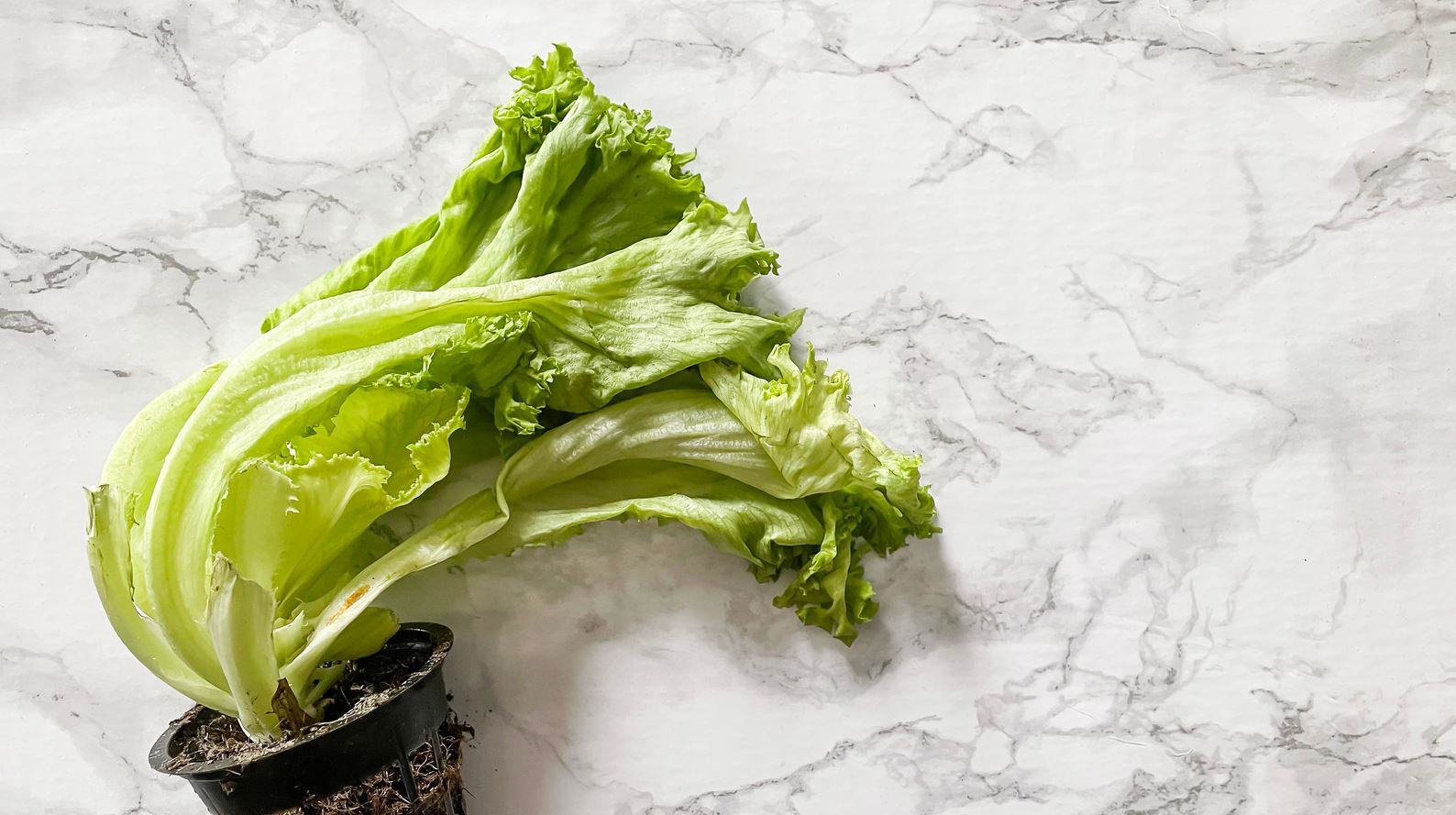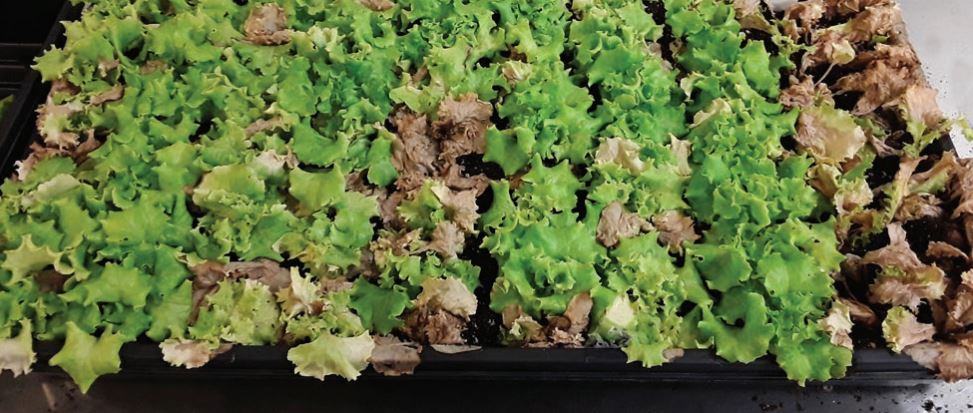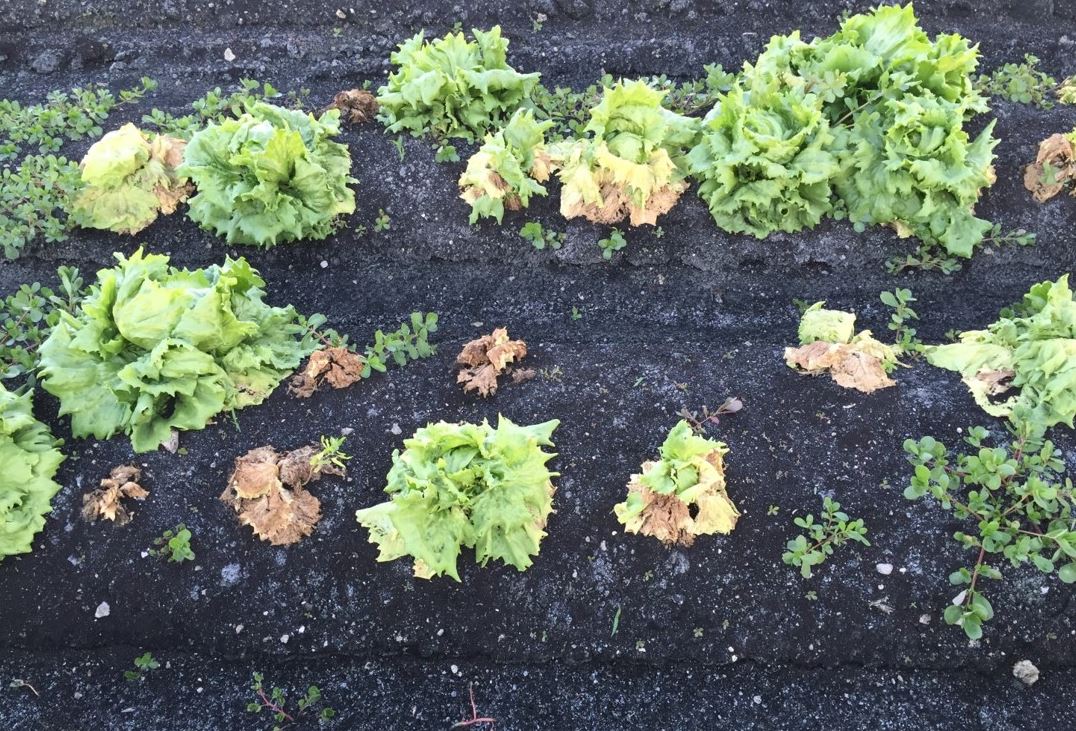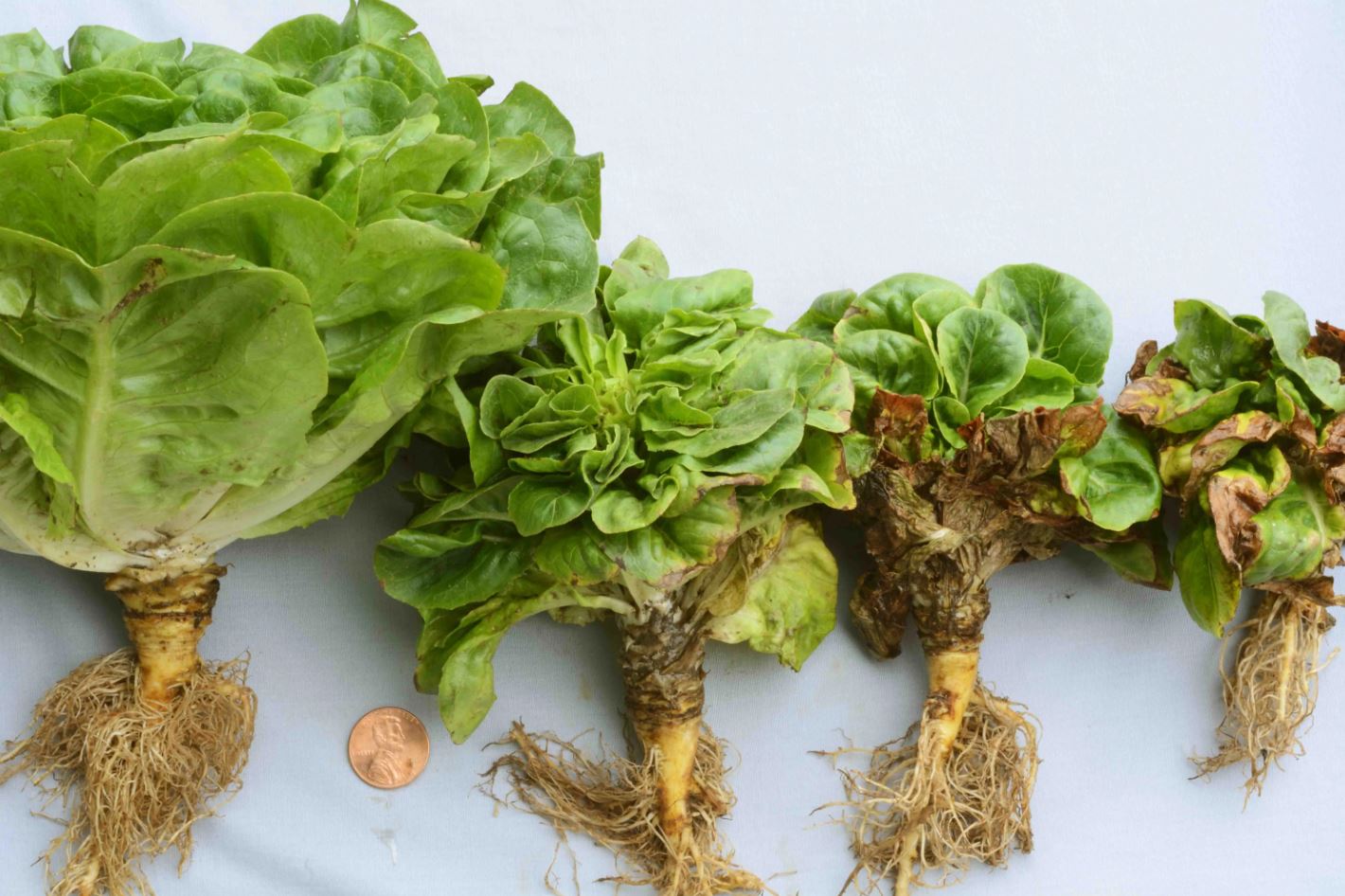A Comprehensive Guide to Storing Combatting Lettuce Wilt
Lettuce Wilt , a staple in many kitchens for its versatility in salads and sandwiches, often disappoints when it wilts prematurely. Despite our best intentions, the freshness of lettuce can degrade quickly after purchase, transforming what should be crisp, vibrant leaves into something limp and lackluster. This common issue not only impacts the quality of our meals but also contributes to food waste. However, wilted lettuce isn’t necessarily a lost cause. Understanding the factors behind this rapid decline in freshness can empower us to extend the life of our leafy greens.
This article will delve into the reasons why lettuce wilt , exploring the role of its high water content and the environmental conditions that expedite this process. We will uncover the science of moisture loss and how improper storage accelerates the wilting of lettuce leaves. From there, we’ll transition into practical and effective methods for preserving lettuce. By examining techniques such as proper wrapping, the strategic use of damp cloths, and the optimal use of refrigerator settings like the crisper drawer, you can significantly delay the wilting process.
Beyond preservation, we will also explore reliable methods to revive your lettuce should it start to wilt. A simple trick involving ice water can often bring back the crunchiness we cherish in fresh lettuce. For those times when revival isn’t successful, we’ll suggest creative ways to repurpose wilted lettuce, ensuring that none of your purchases go to waste. Whether it’s incorporating them into soups or using them in cooked dishes, there are numerous ways to utilize less-than-perfect lettuce. Join us as we guide you through these tips and tricks to maximize the lifespan and usability of your lettuce, turning a common kitchen frustration into a triumph against waste.
| Aspect | Details | Strategies |
|---|---|---|
| Causes of Lettuce Wilt | High water content and environmental conditions contribute to rapid moisture loss and wilting. | Understanding the science of moisture loss and environmental impact on lettuce. |
| Preservation Techniques | Includes proper wrapping, use of damp cloths, and optimal refrigerator settings like the crisper drawer. | Implementing these methods can significantly delay the wilting process, preserving freshness. |
| Revival Methods | Soaking wilted lettuce in ice water can often restore its crispness. | Simple and effective trick to rejuvenate lettuce, making it suitable for consumption again. |
| Repurposing Wilted Lettuce | If revival isn’t successful, consider using wilted lettuce in soups, stews, or cooked dishes. | Provides creative ways to utilize less-than-perfect lettuce, reducing food waste. |
Contents
Understanding Lettuce Wilt
Lettuce, primarily composed of water, typically contains 94 to 96 percent water by weight. This high water content is what gives lettuce its crispness and refreshing taste. However, it also makes it highly susceptible to wilting. Once harvested, lettuce leaves are cut off from their water source, and their cells begin to lose water vapor to the surrounding air—a process accelerated in unfavorable conditions. This loss of cellular water causes the cells to deflate, leading to the leaves becoming limp and wilted. This susceptibility is a natural consequence of the plant’s structure and composition, which, while optimal for growth and development in its natural habitat, does not fare well under typical storage conditions in homes and markets.

The wilting of lettuce is primarily due to two factors: transpiration and respiration. Transpiration, the process by which water evaporates from the surface of the plant, continues even after the lettuce has been harvested. When the surrounding air is dry, transpiration occurs more rapidly, pulling moisture out of the leaves. Respiration, on the other hand, is a process where the plant continues to metabolize sugars, using oxygen and releasing carbon dioxide and water vapor, further contributing to moisture loss.
Environmental factors such as temperature, humidity, and air circulation significantly affect the rate of these processes. High temperatures can increase the rate of respiration, accelerating moisture loss and energy depletion in the lettuce. Conversely, low humidity levels in refrigerators or storage areas enhance transpiration by creating a gradient between the moisture in the lettuce leaves and the dry air, encouraging water to escape from the leaves. Additionally, improper air circulation can lead to uneven cooling and drying, further exacerbating wilt.
| Process | Description | Environmental Impact |
|---|---|---|
| Transpiration | Water evaporates from the plant’s surface, continuing even after harvest. | Enhanced by dry surrounding air, leading to rapid moisture loss from leaves. |
| Respiration | Metabolic process where the plant uses oxygen and releases carbon dioxide and water vapor. | Accelerated by high temperatures, which increase moisture loss and energy depletion. |
| Environmental Factors | Temperature, humidity, and air circulation significantly influence transpiration and respiration rates. | Low humidity in refrigerators or storage areas promotes transpiration; improper air circulation can cause uneven cooling and drying. |
Prevention Strategies
To combat the challenges posed by lettuce’s nature and storage environment, certain storage techniques can be employed to preserve its freshness. One effective method is to wrap the lettuce in a clean, damp cloth before storing it. This technique provides a moist microenvironment around the lettuce, reducing water loss due to transpiration by balancing the humidity around the leaves. After wrapping the lettuce, placing it in a perforated bag is crucial. These perforations allow for adequate air circulation while maintaining a controlled environment that limits the escape of moisture yet allows the lettuce to ‘breathe.’
This setup mimics the natural humidity and air flow conditions that lettuce would experience outdoors, thus slowing down the dehydration process and keeping the leaves crisper for a longer period.

The crisper drawer in your refrigerator is specifically designed to maintain a more humid environment than the rest of the refrigerator. Lettuce, with its high moisture content, benefits significantly from this feature. By setting the humidity control of the crisper drawer to a high setting, you create an environment that is conducive to preserving the natural moisture of the lettuce. This humidity discourages excessive transpiration and helps maintain the crisp texture and nutritional quality of the leaves. Regularly monitoring the moisture levels in the crisper drawer and adjusting the settings as necessary can help provide an optimal storage environment for lettuce and other produce, significantly extending their freshness and reducing food waste.
| Storage Technique | Description | Benefits |
|---|---|---|
| Wrapping in Damp Cloth | Wrap the lettuce in a clean, damp cloth to create a moist microenvironment that reduces water loss. | Helps balance humidity around the leaves, minimizing transpiration and preserving freshness. |
| Storing in Perforated Bag | Place the wrapped lettuce in a perforated bag to allow for adequate air circulation while controlling moisture escape. | Mimics natural conditions, slows dehydration, and keeps lettuce crisper longer. |
| Using the Crisper Drawer | Store lettuce in the crisper drawer of the refrigerator set to a high humidity level. | Optimizes the storage environment to maintain natural moisture and crispness of the lettuce. |
Revival Techniques
Reviving wilted lettuce is often possible with a simple and effective method: soaking in ice water. This process can help restore the crispness of the leaves by rehydrating the cells and making them turgid again. Here’s how you can do it:
Prepare the Ice Water: Fill a large bowl with cold water and add a generous amount of ice. The water should be chilly, as this helps close the pores of the lettuce, reducing further water loss and speeding up the rehydration of the cells.
Trim the Lettuce: Before soaking, trim off any browned or severely damaged ends of the lettuce. This helps in removing parts that are too decayed to revive and could potentially spoil the freshness of the remaining leaves.
Submerge the Lettuce: Place the wilted lettuce leaves or head into the ice water. Ensure that the leaves are fully submerged to facilitate an even absorption of water.
Soak the Lettuce: Allow the lettuce to sit in the ice water. The cold environment not only rehydrates the cells but also revitalizes the crisp texture.

The soaking time for wilted lettuce can vary depending on how limp the leaves have become:
Slightly Wilted: For leaves that are just beginning to lose their crispness, 15-30 minutes should be sufficient.
Moderately Wilted: Leaves that are noticeably limp but not completely devoid of structure may need about 30-60 minutes.
Severely Wilted: For lettuce that is severely wilted, soaking for up to 1-2 hours can be beneficial.
After soaking, it’s crucial to drain the lettuce well and pat it dry with paper towels or use a salad spinner to remove excess moisture. This step ensures that the lettuce doesn’t become waterlogged, which could potentially spoil its texture when stored again.
| Step | Action | Details |
|---|---|---|
| 1. Prepare Ice Water | Fill a large bowl with cold water and add ice. | Ensures the water is chilly to close the pores of the lettuce, speeding up rehydration and reducing water loss. |
| 2. Trim the Lettuce | Cut off browned or severely damaged ends. | Removes decayed parts that are beyond revival, potentially spoiling the freshness of other leaves. |
| 3. Submerge the Lettuce | Place wilted lettuce in the ice water. | Ensures even absorption of water by fully submerging the leaves or head. |
| 4. Soak the Lettuce | Leave in the ice water for a variable time. | 15-30 minutes for slightly wilted, 30-60 minutes for moderately wilted, and up to 1-2 hours for severely wilted lettuce. |
| 5. Dry the Lettuce | Drain and pat dry with paper towels or use a salad spinner. | Removes excess moisture, preventing the lettuce from becoming waterlogged and spoiling its texture. |
Alternative Uses for Wilted Lettuce
Sometimes, despite best efforts, lettuce may be too far gone to revive for raw consumption. However, this doesn’t mean it should go to waste. Wilted lettuce can be used in various cooked dishes:
Soups: Lettuce can add a subtle flavor and additional nutrients to broths and soups. It works particularly well in puréed soups or as a last-minute addition to broths.
Frittatas and Omelets: Chopped wilted lettuce can be incorporated into egg dishes like frittatas and omelets, providing a soft texture and a nice green color.
Stir-fries: While not common, adding lettuce to a quick stir-fry can introduce an interesting texture and is a great way to use up larger quantities of wilted greens.

Wilted lettuce can also be a versatile ingredient in several creative recipes:
Lettuce Wraps: Use the larger leaves as a wrap for a variety of fillings; the cooking process can help mask the wilted texture.
Green Smoothies: Blend wilted lettuce with fruits and other vegetables for a nutritious smoothie.
Braised Lettuce: Braising lettuce with a little butter, stock, and herbs can transform it into a delicious side dish.
Using wilted lettuce in these ways not only reduces food waste but also enhances the nutritional value of meals, offering a sustainable and economical approach to managing kitchen resources.
| Cooking Use | Description | Benefits |
|---|---|---|
| Soups | Add to broths or puréed soups for subtle flavor and extra nutrients. | Utilizes wilted lettuce in a way that enhances both taste and nutritional content of soups. |
| Frittatas and Omelets | Incorporate chopped wilted lettuce into egg dishes for added texture and color. | Enhances the visual appeal and texture of egg dishes while using up wilted greens. |
| Stir-fries | Add to a quick stir-fry for an unusual texture and to use up larger quantities of wilted lettuce. | Provides a unique texture and is a great way to repurpose larger amounts of wilted lettuce. |
| Lettuce Wraps | Use larger wilted leaves as wraps for various fillings; the cooking process helps mask the wilted texture. | Transforms wilted lettuce into an appealing and versatile dish, extending its usability. |
| Green Smoothies | Blend wilted lettuce with fruits and vegetables for a nutrient-packed drink. | Makes use of wilted lettuce in a healthy, refreshing beverage, maximizing its nutritional value. |
| Braised Lettuce | Braise wilted lettuce with butter, stock, and herbs to create a delicious side dish. | Turns wilted lettuce into a savory, flavorful addition to meals, enhancing its culinary value. |
In this comprehensive guide, we’ve explored the delicate nature of lettuce, why it wilts, and effective strategies for both preserving and reviving this staple vegetable. Lettuce wilts primarily due to its high water content, which makes it vulnerable to environmental factors like temperature, humidity, and air circulation. Understanding these factors allows us to better manage how we store and care for lettuce to extend its freshness.
Reducing Food Waste and Extending Enjoyment: The strategies discussed are not only about saving a head of lettuce but are part of a broader commitment to reducing food waste and maximizing resources. By implementing these storage and revival techniques, you can ensure that the lettuce you buy remains usable for longer, thereby saving money and reducing the frequency of purchasing replacements.
Encouragement to Act: I encourage you to try these tips in your own kitchen. Start by adjusting how you store your lettuce right after you bring it home from the store. Use the crisper drawer effectively, and don’t forget the ice water trick when you notice the first signs of wilting. Should you find your lettuce past the point of no return for fresh salads, remember that it still has a place in cooked dishes. Experiment with incorporating wilted lettuce into various recipes, which can be a delightful way to discover new flavors and dishes.
Sharing Experiences: As you incorporate these practices, share your experiences with friends and family. Discussing what works and what doesn’t can help spread effective methods for food preservation, contributing to a larger impact on reducing waste. Online platforms and social media are also great places to share success stories and get tips from others.
In conclusion, the care lettuce wilt , from storage to potential revival or alternative use, reflects a mindful approach to food. It’s about understanding the nature of what we eat and applying knowledge to extend its life and usability. This guide provides the tools not only to save lettuce but also to inspire more thoughtful consumption practices across all types of food. Let us all strive to be more conscious consumers and reduce our food waste, one leaf at a time.
Lettuce -Perfecting Lettuce Shreds A Comprehensive Guide to Shredding
Avoiding Lettuce Shortage with Indoor Gardening Techniques
Ultimate Guide to Lettuce Buttercrunch Cultivation and Care
Lettuce Boston From Cultivation to Cuisine
Succession Planting & Season Extension for Head Lettuce
Delicious Keto Hamburger Lettuce Wraps A Low-Carb Delight
Crafting the Perfect Little Gem Lettuce Salad with Beets
